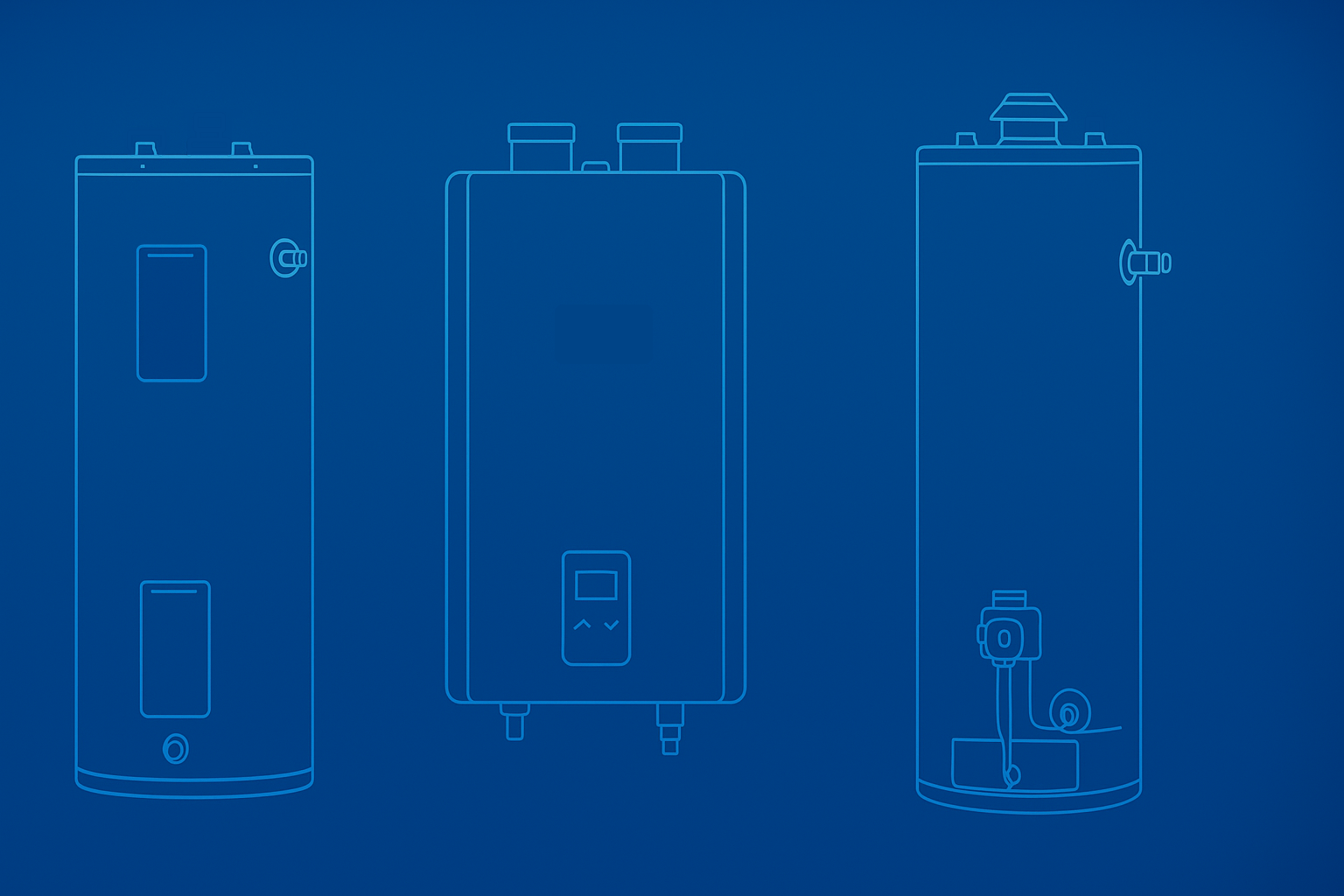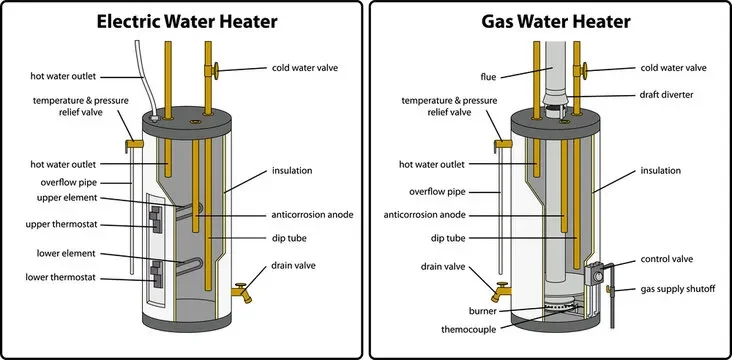
Tank Water Heater Services in Beckley, WV
Tank units come in many varieties for many purposes. Most common are the standard electric or gas water heater. For some mobile homes or in tight locations, you may opt for a lowboy water heater, which is shorter and wider. Some homes may not have a crawlspace, basement, or additional closet space so some homes may go with a tabletop, which also functionally increases counter space. Then there are the more specialized heat pump and power vent units. A power vent unit is a gas powered water heater that requires an additional 120v plug so that the motor can push the exhaust, these units are great in the case of longer horizontal vent runs where venting to the outside of the home may not be easily achievable. For heat pumps water heaters, warm air is pulled into the unit to heat the water alongside the heating elements, which can significantly increase savings costs.
| Heater Type | Fuel | How It Works | Approx. Upfront Cost | Approx. Operating Cost | Best Use Case |
|---|---|---|---|---|---|
| Heat Pump (Hybrid) | Electric | Uses a heat pump to pull ambient heat from the air and move it into the water. | High | Lowest (Electric) | All-electric homes. Massively cuts monthly electric bills. Must be in a large space (garage/basement). |
| Power Vent (Tank) | Gas | Gas tank with a fan that actively pushes exhaust out the side of your house. | Medium-High | Low | Homes needing a gas tank without a vertical chimney. Perfect for basement or closet installs. |
| Standard (Gas Tank) | Gas | Classic gas burner heats a tank. Exhaust rises naturally up a metal chimney. | Low-Medium | Medium | Budget-friendly replacement for homes that already have a proper, existing chimney. |
| Standard (Electric Tank) | Electric | Uses two large heating elements (like a giant kettle) to heat the water. | Low | Highest | Homes without a gas line. Simple to install anywhere, but the most expensive to run. |
| Table Top | Electric | A finished appliance with a flat top, designed to double as a 36" counter. | Low-Medium | Highest | Niche installs in finished utility rooms or kitchens needing extra counter space. |
| Low-Boy | Electric or Gas | A standard tank heater built in a short, wide shape (not a finished counter top). | Low-Medium | High (Electric) / Medium (Gas) | Crawlspaces or any install where vertical height, not counter space, is the main constraint. |
Inside a tank unit
As you can see, the inside of a tank unit is much more simple than the inside of a tankless water heater. There are no programmable control modules or need for a dual venturi for a gas conversion. At its core, the tank unit is a simple storage tank that is heated either by elements (electric) or a burner (gas).
In the case of an electric water heater, there are thermostats that send off and on signals to the heating elements. Only one heating element will ever be active at once.
With gas units, it’s a bit different. There is a large saucer shaped burner that releases flames to heat the water. It has what is called a thermocouple, which is a crucial safety feature that quickly detects when the pilot light goes out. The heat causes a milliamp voltage that keeps the gas valve open, and when this voltage is diminished, the gas immediately shuts off. The gas unit is controlled by a thermostat, which is built directly into the main gas control valve. This thermostat has a probe inside the tank to sense the water temperature and tells the main burner when to turn on and off.
Other than the thermocouple, the only real difference is that the gas unit must have a flue for the venting of exhaust fumes. All water heaters will have a pressure relief (T&P) valve that opens periodically to prevent the build-up of excessive pressure from heat expansion. This is a critical safety feature that prevents modern water heaters from exploding.







